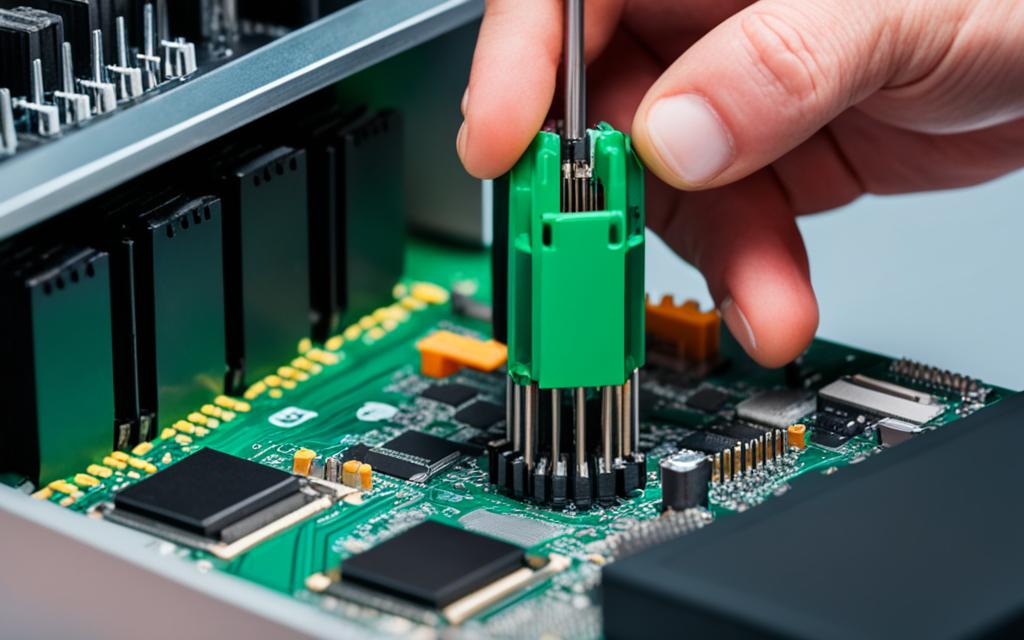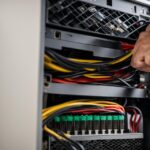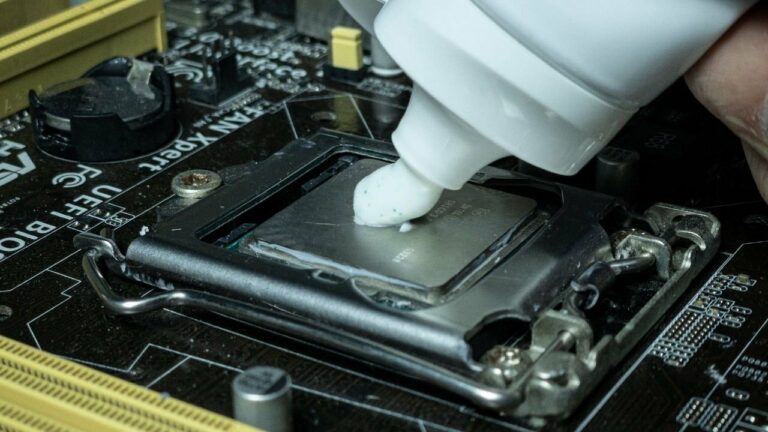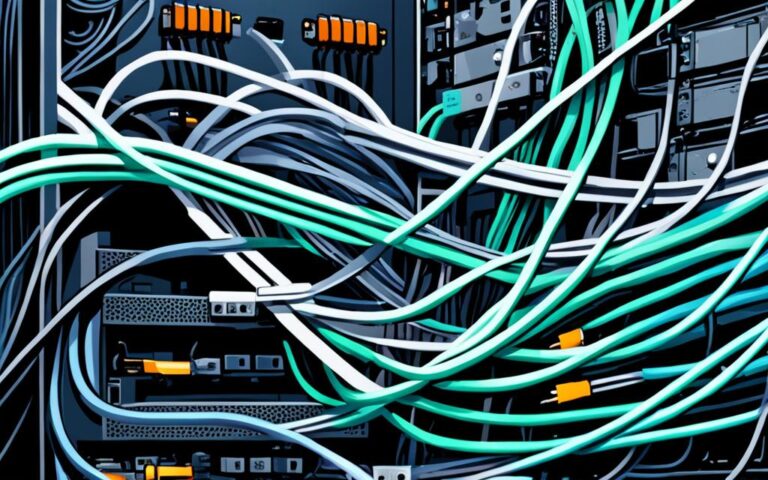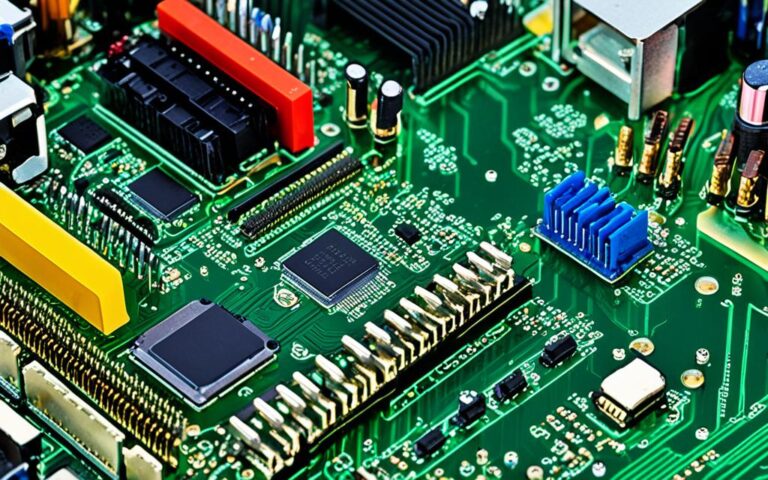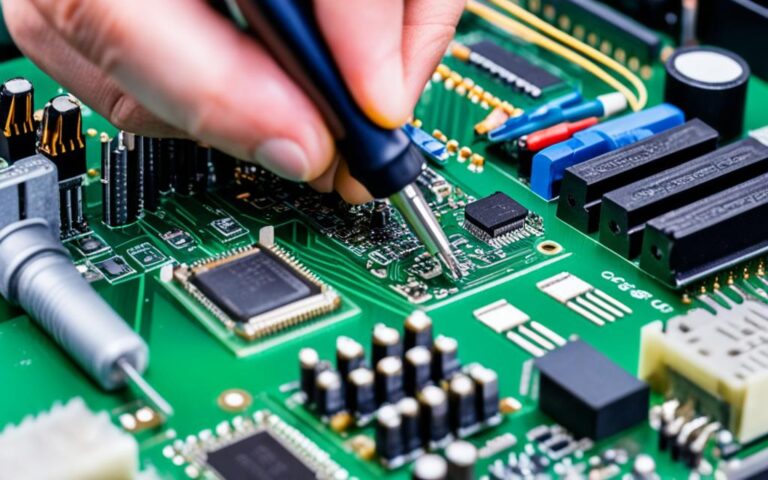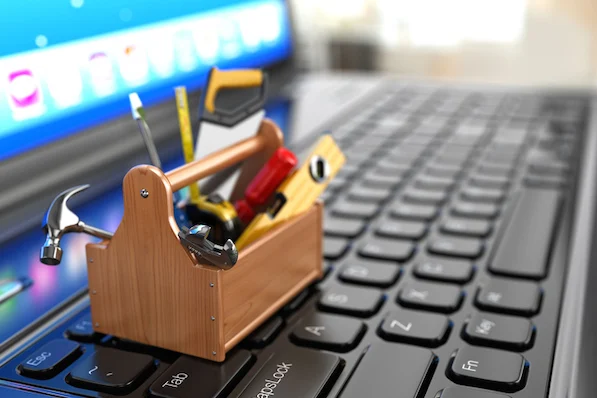Repairing or Replacing a Desktop Motherboard
When it comes to motherboard repair or motherboard replacement for your desktop computer, it is essential to understand the process involved. While the specific steps may vary, the general procedure includes disconnecting cables and removing expansion cards from the current motherboard, replacing it with a new one, and reconnecting all cables and cards.
Before diving into the repair or replacement process, it is crucial to ensure compatibility with the processor, memory, and power supply unit. Additionally, you may need to replace the back-panel I/O template and adjust the motherboard mounting posts. It is highly recommended to back up your important data before starting any work.
Whether it’s a faulty connection or the need for an upgrade, understanding the factors to consider when deciding between repair or replacement is essential. In the next section, we will explore the various factors, including the cost of repair, the age of the motherboard, and the availability of replacement parts.
Factors to Consider for Motherboard Repair or Replacement
When deciding whether to repair or replace a motherboard, various factors should be considered. For laptops, the cost of a replacement laptop motherboard can often be more than the value of the laptop itself. However, for desktop computers, it is generally more cost-effective to replace the motherboard.
The cost of repair should be weighed against the overall value and performance of the system. If the repair cost is too high, it may be more practical to invest in a new motherboard. On the other hand, if the repair cost is relatively low and the system is still capable of meeting your needs, repairing the motherboard might be a viable option.
The age of the motherboard is an important consideration as well. Older motherboards may be more prone to failure and finding compatible replacement parts can be challenging. If the motherboard is significantly outdated, it might be more efficient to replace it with a newer model that offers better compatibility and improved performance.
The availability of replacement parts is crucial in the decision-making process. If the required replacement parts for the motherboard are difficult to find or no longer in production, it may be more practical to replace the entire motherboard.
It is important to note that replacing a motherboard may require other adjustments as well. For instance, reconfiguring the hard drive and potentially reinstalling the operating system might be necessary to ensure proper functionality.
| Factors | Repair | Replacement |
|---|---|---|
| Cost | Depends on the specific repair needed. Can be cost-effective if the repair price is reasonable. | Higher initial cost, but may provide long-term value. |
| Age | If the motherboard is relatively new, repair might be a suitable option. | If the motherboard is significantly outdated, replacement might be necessary. |
| Availability of Replacement Parts | If replacement parts are easily accessible, repair is more feasible. | If replacement parts are scarce or obsolete, replacement is recommended. |
It is essential to carefully evaluate the pros and cons of both repairing and replacing a motherboard to make an informed decision. Consulting with a professional technician can provide valuable insights into the specific situation and help determine the most cost-effective and practical course of action.
Signs of a Faulty Motherboard and Repair Process
Identifying a faulty motherboard can be challenging, as there are often no warning signs before it fails. However, there are certain indicators that can help diagnose the issue.
Some signs of a bad motherboard include:
- Inefficient USB functionality
- Unrecognized mouse or keyboard
- Blank screen upon booting
It is important to note that these symptoms can also be caused by other factors, such as software issues or faulty peripherals. Hence, it is essential to perform a thorough diagnosis.
Diagnosing a motherboard requires specialized equipment and skills. To pinpoint any physical damage or defective components, the following steps may be involved:
- Testing with a voltmeter to check for power irregularities
- Inspecting the motherboard for any visible signs of physical damage
Soldering of delicate components may be necessary to repair the motherboard. It is crucial to exercise caution during this process to avoid further damage.
Depending on the extent of the damage and the availability of replacement parts, repairing the motherboard may or may not be practical. In some cases, it may be more feasible to replace the motherboard altogether.
Consulting with a professional technician who has the necessary expertise and access to specialized equipment is highly recommended to accurately diagnose and repair a faulty motherboard.
Cost and Lifespan of a Motherboard
When it comes to motherboards, their lifespan and cost are key considerations for computer users. The lifespan of a motherboard can vary significantly based on factors such as quality and usage. On average, a motherboard can last for at least 5 years, but some components can endure for as long as 15 years or more. Conversely, there are instances where a motherboard may fail within a year due to various factors.
The cost of a new motherboard is determined by the specifications of the computer. For a generic desktop computer, a new motherboard typically falls within the price range of £50 to £70. However, for individuals seeking high-performance gaming machines, the cost can escalate significantly, ranging from £200 to £400.
Before deciding whether to repair or replace a motherboard, several factors should be evaluated. These include the overall value of the computer, desired performance, and the extent of damage or wear on the existing motherboard. Additionally, taking into account the potential costs involved in both repairing and replacing a motherboard will help in calculating the most cost-effective solution.
Understanding the expected lifespan of a motherboard and the associated costs can guide users in making informed decisions about their computer systems. Assessing the condition and age of the motherboard, as well as the desired performance, will help determine whether repair or replacement is the optimal choice.
| Motherboard | Lifespan | Cost (GBP) |
|---|---|---|
| Generic Desktop | 5 years or more | £50 to £70 |
| Gaming Machine | 5 years or more | £200 to £400 |
Conclusion
In conclusion, when faced with the decision to repair or replace a desktop motherboard, several factors must be taken into consideration. The cost, age, and availability of replacement parts are critical considerations. While it is often more cost-effective to replace the motherboard for desktop computers, this may not be the case for laptops.
The lifespan of the motherboard, presence of physical damage, and the complexity of the repair process also play a significant role in the decision-making process. It is important to assess the specific circumstances and needs of the user before proceeding with either option.
For a more accurate diagnosis and guidance, it is recommended to consult with a specialized technician who has the knowledge and expertise to determine whether repair or replacement is the best course of action. Ultimately, by carefully evaluating all the factors mentioned, users can make an informed decision and ensure the longevity and functionality of their desktop computer or laptop.
